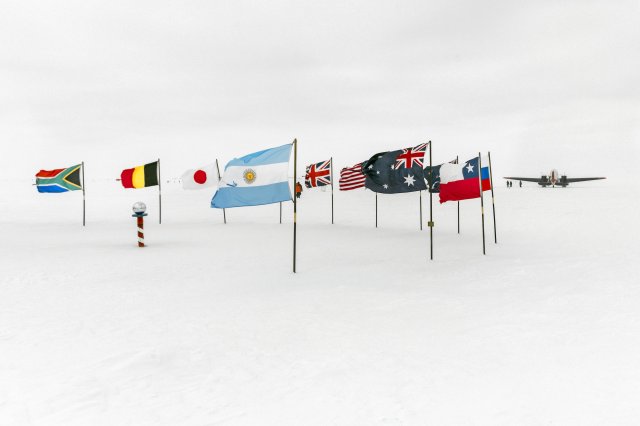December 1, 2020 - by Jeff Jardine - Long before the terms “global warming” and “climate change” became commonplace, a dozen nations agreed to protect Antarctica from the ultimate meltdown.

On December 1, 1959 – 61 years ago today – they signed the Antarctica Treaty that banned military activity and weapons testing on the continent where the South Pole is located.
This agreement was important for a number of reasons. It became the Cold War’s first arms agreement and a model one at that. The U.S. Department of State described the pact as “… an example of nations exercising foresight and working in concert to prevent conflict before it develops.”
It preempted the possibility of any kind of nuclear accident in Antarctica that could cause the ice to melt, which could raise sea levels by several feet and impact weather and climate globally. Granted, the Antarctic ice is indeed melting, but not due to nukes.
The treaty also set the tone for future non-armament agreements that prohibited nuclear weaponry in Latin America, on the ocean floor, and from outer space.
The Antarctica Treaty came about because Argentina, Australia, Chile, France, New Zealand, Norway, and the United Kingdom all had laid claims to parts of Antarctica; with the claims of Argentina, Chile, and the U.K. overlapping.
Additionally, the U.S., Soviet Union, Belgium, Germany, Poland, Sweden, Japan, and South Africa did not file claims but did do some exploration there. Neither the U.S. nor the U.S.S.R recognized the claims of the other nations; yet, kept the right to make similar claims themselves.
Scientists from countries all over the world worked to make the treaty happen, with American and Soviet scientists working side by side, both at “Little America” on the Ross Ice Shelf and the Soviet’s Mirny post over the winters of 1956 and 1957.
Keep in mind that these scientists collaborated at the same time the U.S. and Soviet militaries were engaged in an arms race that ultimately led to the Cuban Missile Crisis in 1962, as well as the space race between the two nations.
The U.S. and Soviet Union in Antarctica led a collaboration of scientists from all of the aforementioned nations in 1957 and 1958. They studied the earth and its cosmic environment, according to the State Department.
Their work led to the Antarctica Treaty, signed by the 12 nations on December 1, 1959, and went into effect June 23, 1961.
The basic terms of the pact remain in effect today for Antarctica, which doesn’t need the help of nukes to melt the ice. A continent, where the highs range from 14 degrees (Fahrenheit) on the coast to minus 76 in the interior, and experienced a record high of 69 degrees (above zero) in February 2020.
Source: CalVet









